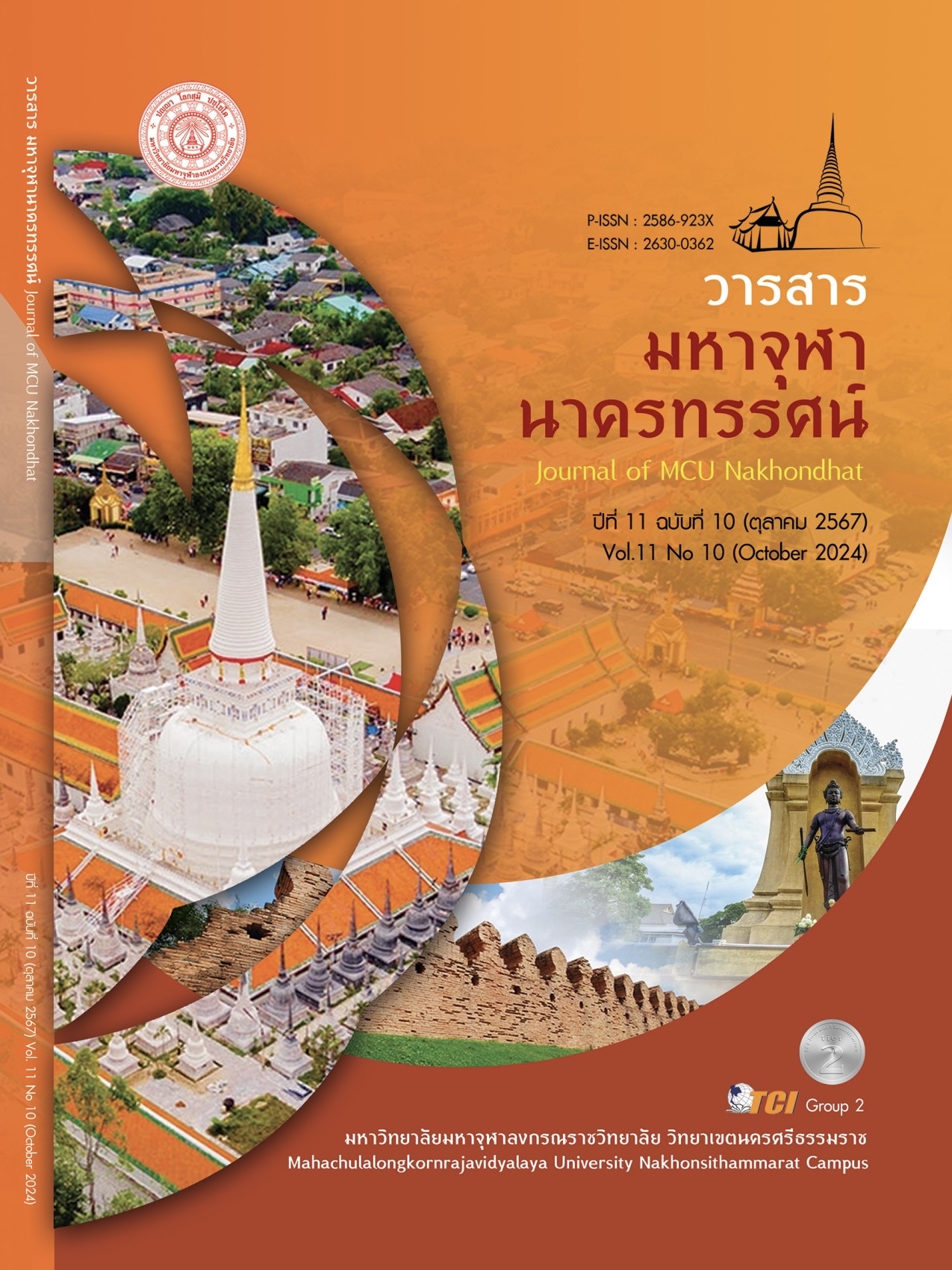STRATEGIES FOR IMPROVING QUALITY OF HUMAN RESOURCES MANAGEMENT IN GUANGXI UNIVERSITIES
Main Article Content
Abstract
This research aimed to study the strategies for improving the quality of human resource management in Guangxi University. This research was a mixed method research. The population used in the research was 285 middle managers, selected by purposive sampling from six different types of public undergraduate universities in the Beibu Gulf Economic Zone, Guangxi. The research instrument was a questionnaire with a reliability of 0.92. Data were analyzed using percentages, means, standard deviations, and content analysis. The results revealed the following: 1) The current situation of human resource management in Guangxi University in five aspects is at a high level. The research results in this area are from highest to lowest as follows: The level of recruitment management is at the highest level (μ = 3.98), followed by training management and performance management (μ = 3.94), and the level of compensation and welfare management is at the lowest level (μ = 3.91). 2) The strategies for improving the quality of human resource management in Guangxi University consist of 5 issues: 1) Recruitment management with 6 measures, 2) Training management with 6 measures, 3) Performance management with 6 measures, 4) Compensation and welfare management with 6 measures, and 5) Employee relationship management, consisting of 6 measures, totaling 30 measures. The appropriateness and feasibility of the strategies for improving the quality of human resource management indicate a high level of appropriateness and feasibility of the strategies. The strategy of excellent organizational management through the development and improvement of the quality of human resources is considered an important mechanism for developing a quality organization to its full potential and creating an innovative society for sustainable problem solving.
Article Details

This work is licensed under a Creative Commons Attribution-NonCommercial-NoDerivatives 4.0 International License.
References
Arifin, S. et al. (2022). Human Resources based on Total Quality Management. Journal of Social Science Studies (JOS3), 8(3), 176-178.
Bhuiyan, M. (2021). Conceptual Framework of Recruitment and Selection Process. International journal of business and social research, 3(6), 122-128.
Caramela, S. (2023). How to improve relations between your managers and employees. International journal of advanced studies in economics and public Sector Management, 17(10), 212-217.
Djuraevna, A. Z. (2021). Formation of Student Management Activities in the Higher Education Management System Pedagogical Advances in Education. International Journal of Research and Review, 58(2), 1494-1499.
Erasmus, B. et al. (2015). Employee retention in a higher education institution. Journal of organisational development perspective, 4(3), 33-63.
Gs, P. & Trivedi, R. (2021). Student alienation and perceived organizational culture: A correlational study. International Journal of Evaluation and Research in Education (IJERE), 10(1), 678-679.
Naji, S. A. (2020). The importance of Training Programs in the Development of performance of Employees and Companies: A review of Related Concepts. Journal Name, 5(10), 31-40.
Shrivastava, R. (2022). Talent Management and Effectiveness of Recruitment Process: A Study of Higher Education Institutions in Central India. International Journal of Professional Business Review, 12(4), 187-189.
Tanjung, A. et al. (2020). Influence of Leadership Orientation and Level of Awards Against Employee Loyalty. International Journal for Educational and Vocational Studies, 17(12), 333-376.
Unurhoro, E. J. & Doris, G. O. (2022). Process of Managerial Training and Its Impact of Manager Effectiveness. International Journal of Research and Review, 7(8), 231-240.


